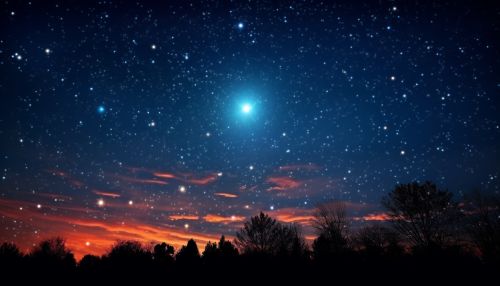Gamma-ray Burst
Introduction
A gamma-ray burst (GRB) is an extremely energetic explosion that has been observed in distant galaxies. They are the brightest electromagnetic events known to occur in the universe. Bursts can last from ten milliseconds to several hours. The intense radiation of most observed GRBs is thought to be released during a supernova or hypernova as a rapidly rotating, high-mass star collapses to form a neutron star, quark star, or black hole.


Discovery and Observation
The discovery of GRBs was a significant event in high-energy astronomy. They were first detected in 1967 by the Vela satellites, which were built to detect gamma radiation pulses emitted by nuclear weapons tested in space. The United States suspected that the Soviet Union might attempt to conduct secret nuclear tests after signing the Nuclear Test Ban Treaty in 1963. On July 2, 1967, at 14:19 UTC, the Vela 4 and Vela 3 satellites detected a flash of gamma radiation unlike any known nuclear weapons signatures.
Classification
GRBs are classified into two types: long-duration (long GRBs) and short-duration (short GRBs), depending on their duration. Long GRBs last more than two seconds and are associated with the deaths of massive stars in supernovae, while short GRBs last less than two seconds and are not associated with supernovae.
Emission Mechanisms
The mechanisms of energy release during a GRB are a topic of ongoing research. The most widely accepted mechanism is the fireball model, in which the core collapse of a massive star forms a black hole or neutron star, leading to the emission of a relativistic jet of plasma. This jet punches through the stellar envelope and, once it breaks through, it expands in a fireball shock wave, converting kinetic energy into gamma rays.
Afterglow
Following the initial burst of gamma rays, a longer-lived "afterglow" is usually emitted at longer wavelengths (X-ray, ultraviolet, optical, infrared, microwave and radio). The afterglow emission is thought to arise from a different process than the original explosion: a shock wave, caused by the GRB, collides with surrounding interstellar gas, causing it to glow.
Impact on Earth
A GRB within a few kiloparsecs could destroy the Earth's ozone layer, causing a mass extinction, though this is thought to be a very rare event. The Ordovician–Silurian extinction, which occurred 450 million years ago, may have been caused by a GRB.
